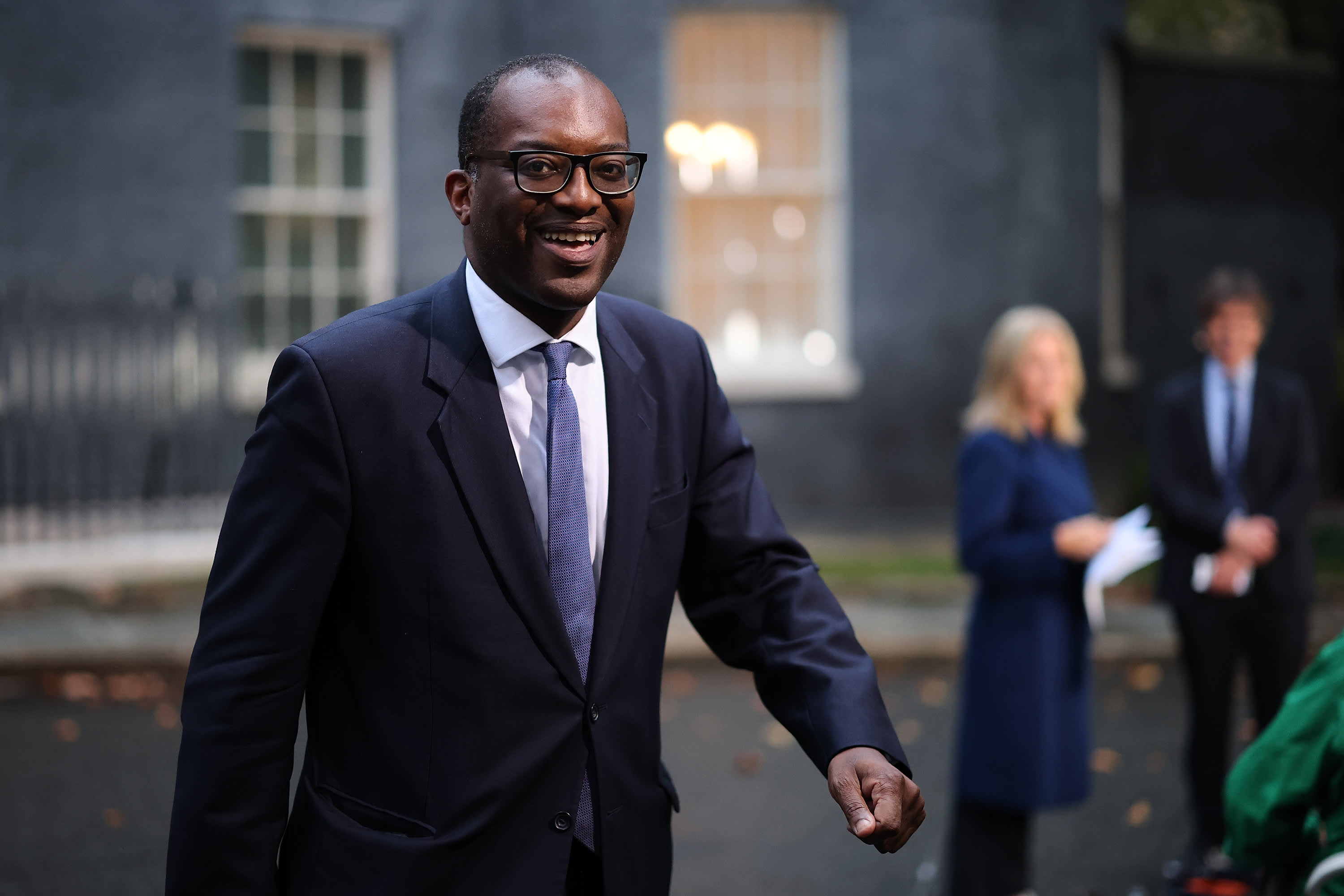
A so-called “mini-budget” by the U.K.’s new government Friday has sparked a level of market volatility not seen in the country since the Covid crash or the Great Financial Crisis.
A package of tax cuts expected to total £45 billion in the coming years, combined with a massive spending increase to help households and businesses deal with higher energy bills, left investors nervous about the U.K.’s future as it takes on higher levels of debt. That was despite Finance Minister Kwasi Kwarteng’s target of a 2.5% growth trend and pledge to release a plan to reduce debt as a percentage of GDP in the medium term.
It comes as inflation remains at 9.9% and the country has likely already entered a recession.
Here was some of the fallout:
Pound plunge
Loading chart…
Sterling’s response to the government’s announcement was near-immediate and extreme.
The pound lost nearly 3.6% against the dollar Friday and continued to fall Monday when the market reopened. It hit an all-time low below $1.04 early Monday morning in London.
It has since recovered slightly, trading around $1.08 at 8:30 a.m. Tuesday, but remains at what was — until this week — a 37-year low. It has fallen from $1.35 at the start of the year.
Loading chart…
While some supporters of the government’s plan have pointed to the dollar’s bull run this year as the cause of sterling’s slide, the pound also fell against the euro.
The euro is current trading around £0.89 — up from £0.84 at the start of the year — despite the euro zone facing its own significant challenges, ranging from an energy crisis to growing recession risks.
Bond moves
Loading chart…
Yields on U.K. government bonds have rocketed following the government’s budget — meaning their prices have fallen drastically (bond yields move inversely to prices).
Gilt yields are now set for their biggest monthly rise since at least 1957, according to a Reuters analysis of both Refinitiv and Bank of England data.
The yield on 10-year gilts, which influences mortgages and other borrowing rates, has climbed from 2.882% to 4.073% so far in September.
Soaring yields and a slumping pound have led some mortgage lenders to pause new home loans and withdraw certain mortgage offers.
More rate hikes?
A key question now is whether the Bank of England, which has already raised interest rates from 0.1% to 2.25% over the last nine months, will be pushed into faster and higher rate rises.
On Monday, Governor Andrew Bailey said the bank would “not hesitate to change interest rates as necessary.” However, he said a decision would be made at its next scheduled meeting in November, playing down speculation of an emergency rate hike or intervention to prop up the pound.
The U.K. overnight indexed swap market now points to an 80% chance of a hike to 3.5%, which would be a 125 basis points rise, and a 20% chance of an even higher hike to 3.75%.

